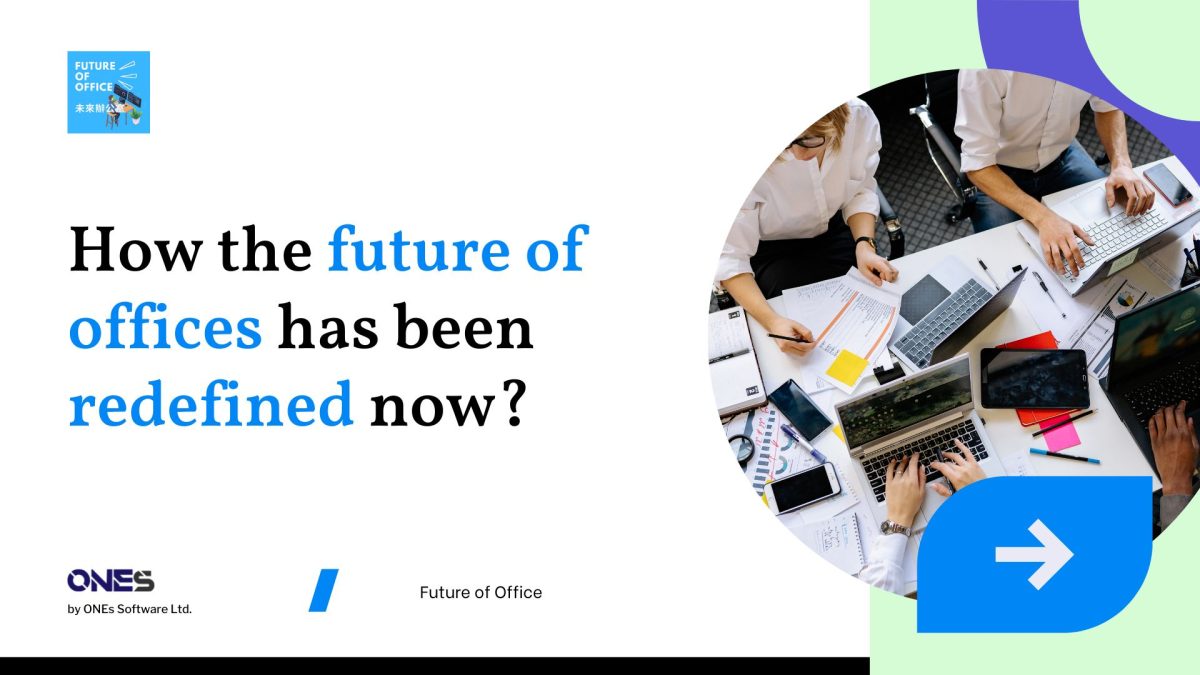- The future of the workplace has been rapidly changed because of the economic shift and the Covid-19 epidemic.
- The meaning of performance and office environment has been redefined in recent years.
The office has changed from time to time. In America, it evolved from factory-like office floors in the early twentieth century through the postwar corporate world of cubicles, to our current era of flexible workspaces and open-floor layouts.
Based on the article “The Way We Work Has Changed. So Should Offices“, there are 3 reasons that create the workplace a scene of extraordinary conflict as well as immense potential:
Table of Contents
3 reasons that make the future of the workplace changed
First of all, the entire economy has already been shifting away from manufacturing and toward a knowledge-based digital economy. Those old-fashioned B&M workspace and hierarchical structure are long obsolete.
Secondly, the Covid-19 epidemic enabled a large number of individuals to begin working from home — and many are hesitant to resume their previous routines. According to an Accenture poll, 58 percent of individuals worked a hybrid schedule throughout the pandemic, and 83 percent believe hybrid is the “ideal” work paradigm for the future.
Last but not least, there has been a seismic shift in the way people think about employment, as indicated by the phenomena dubbed “the Great Resignation.”
So, how our working lives can be changed to support the new kind of working style?
Glossary: What is Great Resignation
Beginning in early 2021, employees willingly left their employment in large numbers, resulting in the Great Resignation. Wage stagnation due to increased living costs, long-term job unhappiness, safety worries from the COVID-19 epidemic, and a desire to work for firms with superior hybrid-working policies are all possible explanations.
How the future of the workplace has been changed?
1. Workplaces for Hybrid-work
Work-as-Lifestyle is the office design trend before 2020. A well-designed office was expected to have lots of facilities for people to enjoy: movie theaters; ping-pong tables and beer taps; nap rooms and meditation rooms.
However, this type of model already cannot responds to the work-from-home-wave of the pandemic. People quickly discovered that if they wanted to hybrid business and pleasure, they could do it safely and comfortably in their own living rooms.
Rather than providing facilities for fun, people now expect to have a workplace that supports them to flexibly choose to work at the office or from home.
2. Redefine the office environment
People now can work from everywhere: from their home, café near their house, playground next to the sea, thanks to technology. “Work itself has become diffuse and distributed, and we need new ways to navigate the relationship between the private workplace and the public sphere.”, Martin Henn said.
On the one hand, the concept would include better integration of workplaces into the city through technology and infrastructural integration that makes offices more efficient and accessible.
The office-urbanist notion, on the other hand, refers to an understanding of the workplace as a type of city, a place with a diversity of action and a gradient from more private to more public places, with chances for workers to engage in the urban life all around them.
Just like Japanese telecom provider NTT planning to increase the number of satellite offices in the future by splitting its headquarters in Tokyo into other cities, this can be mitigating the negative effects of dense office skyscrapers and be disseminating their economic advantages, such as reducing the costs of brain drain and high rents.
Related article: NTT now allow 30,000+ employees to remote work fully
3. Redefine the high-performance office
A high-performance office now means a people-focused hybrid workplace with high efficiency, flexibility, and safety concerns.
It should aim to blend the best aspect of those working from home and others that missed the office with the feeling of culture, community, and concentrated purpose that they formerly found there. Companies should transform the workplace into a workshop for co-creation and collaboration by utilizing digital and physical infrastructure.
Apart from hot-desking and co-working spaces, a high-performance office building is totally responsive and able to learn and evolve with its users.
Built-in interactives — IoT sensors and screens that act as the interface between buildings and people, controlling heating, air, and light while also charting new business initiatives and soliciting feedback — could be included in such spaces.
It’s time to adapt the hybrid workspace
According to the most recent WFH Research statistics, quoted by Bloomberg, most typical office workers appear to favor the ability to work from home at least one day each week.
If their company refuses to provide hybrid working possibilities, people in their twenties are more inclined to start seeking new employment, while those over 50 are more likely to just resign.
Now is the moment to listen to firms and business executives who wish to flourish in this rapidly changing world.
ONEs Software now has a dedicated page to introduce a series of smart office measures to help you solve problems. You may wish to go to https://ones.software/hybrid-workspace/ for further reference.
Contact us: hello@ones.software, or visit ONEs Software official website for more information: https://ones.software/.


